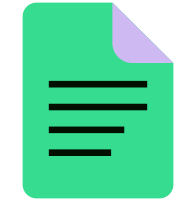What we do know for sure is that the drug in it’s two-fold use (both recreationally and medicinally) was most commonly documented in the early 19th century. In the U.S., cannabis was widely utilized as a non-prescription medicine and was first described in the United States Pharmacopoeia in 1850. Xenophobia was next to grip the nation as a flood of Mexican immigrants fleeing the Mexican Revolution of 1910 introduced marijuana’s recreational use. Interestingly, it was only referred to as marijuana “because anti-cannabis factions wanted to underscore the drug’s “Mexican-ness,” according to NPR. It was meant to play off of anti-immigrant sentiment. The “marijuana menace” then became the battleground with a specifically delineated “us” and “them” — later to expand to “African-Americans, jazz musicians, prostitutes and underworld whites,” Eric Schlosser wrote for the Atlantic in 1994. The Volstead Act of 1920, which raised the price of alcohol in the United States, positioned marijuana as an attractive alternative and led to an increase in use of the drug. “Tea pads,” where a person could purchase marijuana for 25 cents or less, began appearing in cities across the United States, particularly as part of the black “hepster” jazz culture.
By 1930 it was reported that there were at least 500 of these “tea pads” in New York City alone. During the Great Depression as unemployment increased, resentment and fear of the Mexican immigrants became connected to marijuana use. Numerous research studies linked marijuana use by lower class communities with crime and violence. In 1937, Congress passed the Marijuana Tax Act which criminalized the drug. By the time the Marijuana Tax Act was passed, the well-known anti-cannabis propaganda film Reefer Madness had debuted. Federal and state governments, as well as scientific sources, began a campaign of misinformation on the use of cannabis. The Federal Narcotics Bureau’s propaganda allowed for the difference between cannabis & hemp (the amount of THC content) to be lost in fear as the “Marihuana Act of 1937\” finally made the cannabis plant federally illegal. The value of industrial hemp would not be revitalized until World War 2 when a shortage of hemp imports caused the U.S Department of Agriculture to create its “Hemp For Victory” initiative. Farmers growing hemp were excused from war as they provided the raw materials to support the military’s needs. Yet, as soon as WWII ended, both cannabis and hemp remained illegal.
From 1951 to 1956 stricter sentencing laws set mandatory minimum sentences for drug-related offenses. In the 1950s the beatniks appropriated the use of marijuana from the black hepsters and the drug moved into middle-class white America in the 1960s and this explosion of usage made it a target for the embryonic Drug Enforcement Agency. The National Organization for the Reform of Marijuana Laws (NORML) was founded the same year.
Under President Nixon’s administration in 1970, US Congress passed the Comprehensive Drug Abuse Prevention and Control Act. This act led to the classification of marijuana as a Schedule I substance, meaning the government recognized no legitimate use for its production, sale, possession, or use. This put marijuana on par with substances such as cocaine and heroin.
This was not the last strike against marijuana use. Despite interest from President Jimmy Carter to decriminalize the casual use of marijuana in the late 70s, its vilification continued into the 1980s. The Reagan administration took a hard stance against drugs, including marijuana. Initiatives such as the Drug Abuse Resistance Education (DARE) and First Lady Nancy Reagan’s Just Say No programs flooded the airwaves and became commonplace in America’s schools. Under Reagan, penalties continued to stiffen for drug-related offenses. The advent of controversial “three strikes” laws and mandatory sentencing regimes meant that anyone convicted of nonviolent offenses like marijuana possession could be sentenced to life without parole.
Since then, lawmakers have been doing a do-si-do with the drug. Over the decades, stricter enforcement and the passing of mandatory sentencing laws have traded off with repeals of those laws and efforts at legalization. Today, fifteen states have legalized marijuana (with many more allowing medical marijuana), but, as far as the federal government is concerned, there is still more work to be done.



